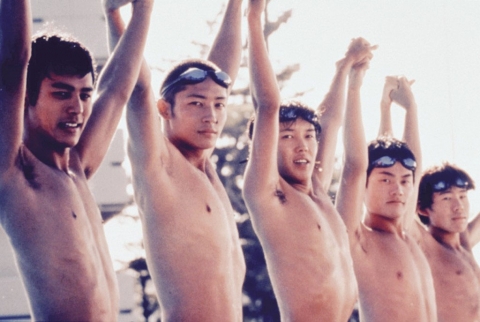More Skinship
The term “skinship” (スキンシップ) originated as a pseudo-English Japanese word (wasei-eigo), which was coined to describe the closeness or intimacy between mother and child.
Skin+relationship. It seems the Japanese have realized that as humans we crave skin on skin contact and skinship merely denotes a situation where people are close enough to have skin-to-skin contact. Today, the term is commonly used for bonding through physical contact, such as holding hands, hugging, etc. The first citation of this term appears in 1971 by Nihon Kokugo Daijiten.
According to Scott Clark, author of a book on Japanese bathing culture, the word combines “skin” with the last syllable of “friendship”. The connection with the English word ‘kinship’ suggests a further explanation.
Use of the word “skinship” in English writings seems to focus on the notion of sharing a bath naked, an idea identified in Japanese as “naked association” (裸の付き合い). It is not clear why the meaning shifted to the parent–child relationship when borrowed back into English.
Skinship is widespread among Japanese and South Korean boys and men, where they touch each other on a regular basis. Platonically bonding through the skin with your best pal is an accepted practice and no more sexual than a handshake. High school boys are constantly holding hands, sitting on each other’s laps, and feeling each other up. None of the boys see it as anything but basic friendliness.
This word is mainly in use in Japan and South Korea and is rarely or never used by native English speakers.
Often we can spend an entire day without actually touching another person; this is so common in main cities where people can feel lonely surrounded by other people. Maybe skinship is the next best thing and “touch”, as part of how we communicate, should just be integrated more comfortably in our lives.



